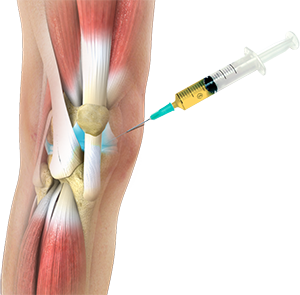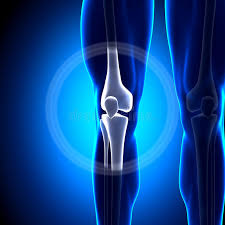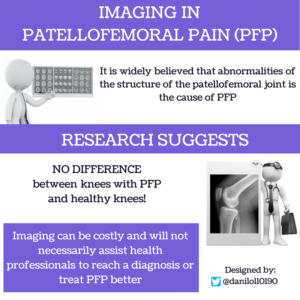In this section, you will find information about the relevance of assessing knee joint structure of patients with patellofemoral pain.
Assessment of the patient’s underlying structure and degree of joint pathology may be important to some presentations of patellofemoral pain. However, consistent with emerging evidence in other common musculoskeletal conditions such as low back pain, the correlation between structure and symptoms has been shown to be low in those with patellofemoral pain.
Self-reported pain and pain during functional activities performed by patients with patellofemoral pain are not associated with structural damage detected in imaging (e.g. x-ray or MRI), suggesting that health professionals cannot rely solely on structure to identify the source of symptoms or to plan treatment.
Despite some patients still present patellofemoral pain symptoms 5-8 years after treatment, most of them did not present signs of knee osteoarthritis in x-ray exams which does not support the proposition that long-term patellofemoral pain is associated with structural changes in younger adults.
Important note: Health professionals treating patellofemoral pain should be encouraged to carefully consider the purpose of requesting imaging and should ensure the patient is well educated on the relevance of structural changes identified following imaging investigations.
 Imaging findings should have limited impact on treatment decisions in most cases, and health professionals who are working with patients seeking interventions aiming to address structure or structural pathology should ensure adequate time is spent discussing the available evidence as they lack evidence to support their effect (e.g. platelet-rich plasma injections) or are not recommended (e.g. arthroscopy surgery).
Imaging findings should have limited impact on treatment decisions in most cases, and health professionals who are working with patients seeking interventions aiming to address structure or structural pathology should ensure adequate time is spent discussing the available evidence as they lack evidence to support their effect (e.g. platelet-rich plasma injections) or are not recommended (e.g. arthroscopy surgery).
See the video below for more information about the effect of knee surgery in patients with patellofemoral pain.
PODCAST
SHORT INTERVIEW
Section under development: Here you will find a podcast or a short interview.

